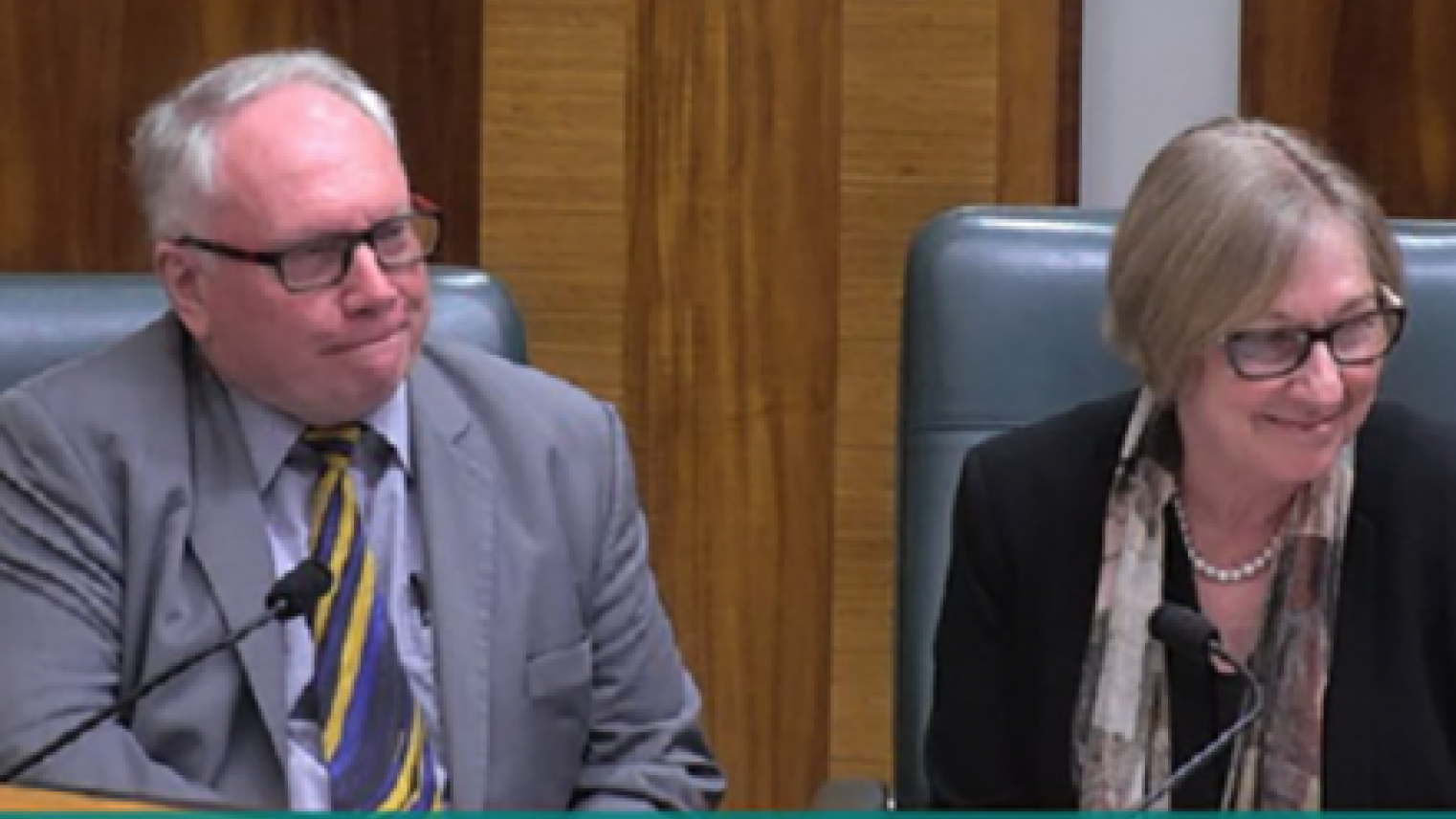Connecting macro level interventions to micro level problems – aged care and the Royal Commission

How could a regulatory regime be designed so that it is flexible enough to address quality and safety in different aspects of service delivery? What is the role of complaints in regulation and what are the characteristics of an effective complaints system? How important is a culture of continuous improvement to a quality system and why? Mary Ivec reflects on RegNet’s founders John and Val Braithwaite’s appearance at the Royal Commission on Aged Care Quality and Safety and their work on aged care and what it means for broader regulatory challenges.
When asked by Mr Richard Knowles, Counsel Assisting at the Royal Commission on Aged Care Quality & Safety Brisbane hearing of the on 9 August 2019 about their past experience and expertise, John Braithwaite described himself and Valerie Braithwaite as “regulatory generalists….there was a long period of our lives where regulation of aged care was our main research topic ….. (then) regulation of vocational education and training (and then) other areas such as environmental regulation….so we have broad experience of regulation.” John then went on to acknowledge Professor Toni Makkai who was unable to be present. Toni Makkai was such a major contributor to our program of research across the decades on the regulation of aged care and it was so important to her to be here today, partly in light of her mother’s recent struggles with issues of aged care quality but she’s sitting beside her mother at the moment in the Ainslie Goodwin Aged Care Home.”
For the next hour, RegNet’s founding directors shared what works, what doesn’t and why, in regulation more broadly, and in aged care more specifically, based on their decades long research work with their colleague Toni Makkai. At the end of their evidence, Commissioner Tracey thanked them, saying, “We have learned a great deal in the last hour and the good part of it is that it comes from people with a depth of experience of the industry but from people who are not captive by any of the competing interests in the industry, and we’re very grateful for the independence of your well-thought-through views.”
John, Val and Toni Makkai’s work in the regulation of aged care culminated in the publication of their text, Regulating aged care: ritualism and the new pyramid (Edward Elgar, 2007) which brought together aged care data over the 1980s, 90s and 2000s. In addition to this sustained dataset, John and Val drew on their first-hand experience after serving on accreditation boards, and as active consumer and carer advocates. The book introduces the strengths-based pyramid, which sits alongside the regulatory pyramid, and incorporates some of the other conditions during inspection which could improve compliance, including inspector praise.
The substance of John and Val’s work lies in their argument that all aged care regulatory systems have productive and counterproductive features. All systems can improve by eliminating qualities that are counterproductive, and by pursuing continuous quality improvement through good systems and processes being in place, being used and that actually work. Building on strengths and learnings from aged care and beyond can help with such quality improvement. Regulatory science is also helpful when it comes to bigger questions of compliance and enforcement—the effectiveness of inspections, for example. Compliance is not driven by how tough sanctions are, but rather by “inspection that assures detection, and by the deployment and use of a varied mix of enforcement tools.” More broadly, “regulation is as important as the level of reflective professionalism, training, managerial competence and the relational culture of caring.”
Many of the questions posed by the Royal Commission to John, Val and Toni while relating to the aged care context apply more broadly across regulatory contexts: what is the role of regulation? What outcomes can or should it achieve? What does ritualistic and ‘risk-based’ regulation mean? What would be important in a regulatory system that promotes quality and safety? What is the role of complaints in quality and safety regulation and what are the characteristics of an effective complaints system? Does an accreditation system promote (or retard) continuous improvement? The role of inspection, monitoring, safeguarding, enforcement and industry capture are all areas of regulatory science that apply across regulatory domains. The extensive breadth and depth of research undertaken by the Braithwaite’s research across numerous regulatory domains makes it clear why Royal Commissions, and so many other regulators, rely on their knowledge and experience for guidance and advice. This engagement and impact has been many a decades’ long Braithwaite trademark.
At the time of writing we heard the unexpected and sad news of the passing of Commissioner Richard Tracey, appointed Chair of the Aged Care Royal Commission on 6 December 2018. Commissioner Tracey presided over many hearings and was remembered not only for his distinguished career but for his humanity. “Richard was genuinely interested in people and their circumstances”. This micro-level interest translating to macro level analysis and drive for improvement is the grist for a vibrant, listening and impactful RegNet community, to connect macro level interventions to micro level problems, to connect people, dialogue and opportunities for all those around us.